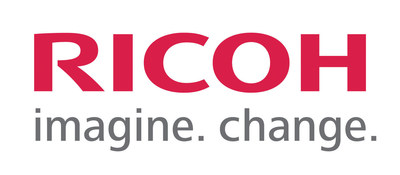Ricoh recognized again for its dedication to the environment by committing to sustainable products and methods, and sustainability education
MALVERN, Pa., April 6, 2017 /PRNewswire/ -- For the second year in a row, the U.S. Environmental Protection Agency (EPA) has recognized Ricoh with the highly-coveted ENERGY STAR Partner of the Year Award. This latest accolade acknowledges Ricoh's diligent work to reduce greenhouse gas emissions by manufacturing energy-efficient products, adopting sustainable approaches to its operations and supply chain, and educating consumers and employees about energy efficiency.
Ricoh, an ENERGY STAR partner for imaging equipment since its inception, will be honored for:
- Technology Innovation in support of ENERGY STAR - Ricoh designs and develops products with ENERGY STAR specifications in mind, creating energy efficiency without sacrificing business productivity. Ricoh continuously looks for ways to drive both sustainability and productivity at once in many ways. For example:
- Ricoh introduced motion sensors into its product line, allowing multifunction printers (MFPs) to power up from sleep mode promptly by touching the panel screen, so they are ready to use on approach.
- The number of Ricoh product models that are ENERGY STAR certified has increased 27.2 percent since last year.
- 100 percent of Ricoh's multifunctional printers (MFPs) qualify under ENERGY STAR version 2.0.
- Ricoh earned the Coalition for Government Procurement's Green Excellence in Partnership award, a recognition awarded to only one manufacturer per year.
- Continued to build on sustainable operational practices – Ricoh's West Caldwell, N.J., office facility achieved ENERGY STAR Building Certification for the third year running.
- Challenged all employees to take the ENERGY STAR pledge - Ricoh reached 100 percent of the employee population, and others via outreach to employees' children during Bring Your Daughters/Sons to Work Day for this pledge challenge. The program began in January and continued with emails, posters, "plantable" bookmarks, PowerPoint presentations and a selfie station to encourage employees to take the pledge. The emissions savings of the Ricoh employees' ENERGY STAR pledge commitments include:
|
2015-2016 Savings Breakdown
|
|
Greenhouse Gas Emissions:
|
11,464,191 lbs
|
|
Pledge Actions:
|
1,176
|
|
Dollars:
|
$783,368
|
|
kWh:
|
7,026,250
|
|
BTUs:
|
3,232,360,514
|
- Educating customers - Ricoh's Global Accounts team, which serves Fortune 100 companies and its Healthcare and Higher Education specialists, provide education to customers regarding energy efficiency, including information about ENERGY STAR and a request to take the ENERGY STAR pledge.
- Dealer partners - At Convergence 2016, Ricoh's popular dealer event, Ricoh provided product sustainability education to this influential group. Ricoh's Voice of the Customer surveys show that 54 percent of customers expect to work with a sustainable company, highlighting the importance of this level of information sharing.
- Social media and web presence – 105 percent more ENERGY STAR content was included in Ricoh's new website, launched in 2016. Additionally, Ricoh increased its ENERGY STAR-related media and social media content 89 percent this year.
"Ricoh prides itself on efficiency and adaptability in the new world of work, and our partnership with ENERGY STAR plays a key role in that," said Donna Venable, Executive Vice President, Human Resources and Deputy General Manager, Shared Services, Ricoh Americas. "We don't see business results at odds with sustainability: We see sustainability as an opportunity to better serve our planet as we find ways to better serve our customers. Sustainability is in our DNA, and we are proud to continue building on it today and into the future."
Since its inception in 1992, ENERGY STAR and its partners have helped prevent a total of 2.8 billion metric tons of greenhouse gas emissions, while helping families and businesses save $430 billion on utility bills. ENERGY STAR has 16,000 partners working to protect the environment through greater energy efficiency, including manufacturers, retailers, public schools, hospitals, real estate companies, and home builders.
Ricoh has also been named a member of the EPA's SmartWay® Transport Partnership, an innovative collaboration between the EPA and industry that provides a framework to assess the environmental and energy efficiency of the movement of goods through the supply chain. This partnership is responsible for savings of 170.3 million barrels of oil, $24.9 billion in fuel costs, 72.8 MMT of carbon dioxide, 1,458,000 tons of nitrogen oxides and 59,000 tons of particulate matter – the equivalent of eliminating the annual energy use in over 6 million homes.









